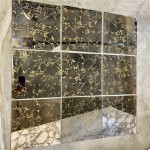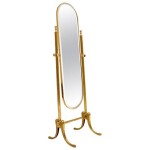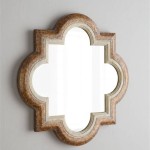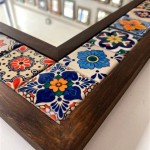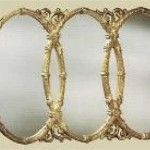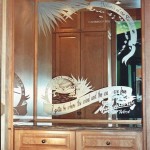How Do You Make a Double-Sided Mirror?
The term "double-sided mirror" is often a misnomer. A true mirror, with a reflective metallic coating applied directly to the back of a piece of glass, cannot be double-sided. What is commonly referred to as a "double-sided mirror" is more accurately called a "two-way mirror" or "one-way mirror." This effect is achieved not through special mirror construction, but through a combination of lighting and a partially reflective surface.
A two-way mirror functions based on the principle of differential reflectivity. A thin layer of metallic coating, typically silver or aluminum, is applied to a piece of glass. This coating is thinner than that of a standard mirror, allowing some light to pass through while reflecting the rest. The degree of reflectivity and transmittance depends on the thickness of the metallic coating. The thicker the coating, the greater the reflection and the less the light transmission.
The crucial factor in the "two-way mirror" illusion is the difference in light levels between the two sides of the glass. In a brightly lit room, the reflected light from the mirror's surface overwhelms any light attempting to pass through from the other side. Observers in the bright room see their own reflection, just as they would in a regular mirror. Meanwhile, the dimly lit room on the other side receives some light from the bright room, enabling observers in the darkened room to see through the glass, as if it were a window.
The manufacturing process for a two-way mirror begins with selecting high-quality float glass, ensuring minimal distortion and a smooth surface. The glass is thoroughly cleaned to remove any dust or impurities that could interfere with the coating process. The metallic coating, usually a very thin layer of silver or aluminum, is then applied to the glass. This can be achieved through various methods, including vacuum deposition, sputtering, or chemical plating. Vacuum deposition is a common technique, where the metal is heated in a vacuum chamber until it vaporizes and condenses onto the glass surface, forming a uniform thin film.
The thickness of the metallic coating is critical in determining the mirror's reflective properties. A thicker coating results in higher reflectivity and lower light transmission. The desired thickness depends on the intended application and the specific lighting conditions where the mirror will be used. Once the coating process is complete, a protective layer is often applied over the metal to prevent oxidation and damage. This protective layer can be a paint, lacquer, or another durable coating.
The installation of a two-way mirror is also a key factor in its effectiveness. The brighter room typically houses the observation side, while the dimmer room is the observed side. Careful control of lighting is crucial. Any light sources in the observation room should be directed away from the mirror surface to minimize reflection back into the room and enhance the mirror effect. Conversely, avoiding bright light sources in the observed room helps maintain the transparency effect from the observation side.
While often depicted in fictional scenarios for surveillance, two-way mirrors have practical applications in a variety of settings. They are used in research facilities for observational studies, allowing researchers to observe subjects without their awareness. They are also utilized in certain architectural designs to create illusions of space and depth. Furthermore, two-way mirrors are sometimes employed in stage magic and illusions to create surprising visual effects. Specialized versions of two-way mirrors are also used in optical instruments and certain types of teleprompters.
The perception of a two-way mirror as "seeing through" is an illusion created by manipulating light levels. If the lighting levels on both sides of the glass were equal, the partially reflective surface would allow visibility in both directions. This principle is sometimes demonstrated dramatically by suddenly illuminating the observation room, instantly transforming the seemingly opaque mirror into a transparent window, revealing the observers to the observed.
The effectiveness of a two-way mirror heavily relies on managing the lighting conditions. Factors such as the intensity and placement of light sources significantly influence the illusion. Ambient light, including natural light from windows, also plays a role and needs to be considered during installation and usage.
The quality and uniformity of the metallic coating also affect the mirror's performance. Imperfections or variations in the coating thickness can lead to uneven reflectivity and compromise the desired effect. Therefore, precise control and monitoring during the coating process are essential for producing a high-quality two-way mirror.

Double Sided Mirror Useful Life S Simple

Glass Two Way Mirror In Stock Custom Sizes Worldwide

How To Spot A Double Sided Mirror Geeky Grizzly

How To Detect A Two Way Mirror Fingernail Test

How To Tell If A Mirror Is Two Way Or Not 8 Steps With Pictures

Lighting Collection Kansas Silver Double Sided Desktop Mirror Diy At B Q

5 Times Double Sided Desktop Make Up Magnifying Mirror China And Made In Com

Double Sided Make Up Mirror

Double Sided Led Make Up Mirror

Whole Lisseau Double Sided Bathroom Mirror Pound

